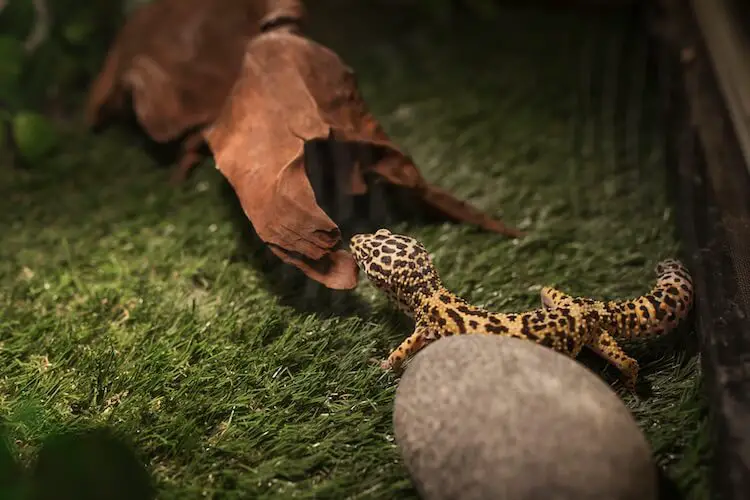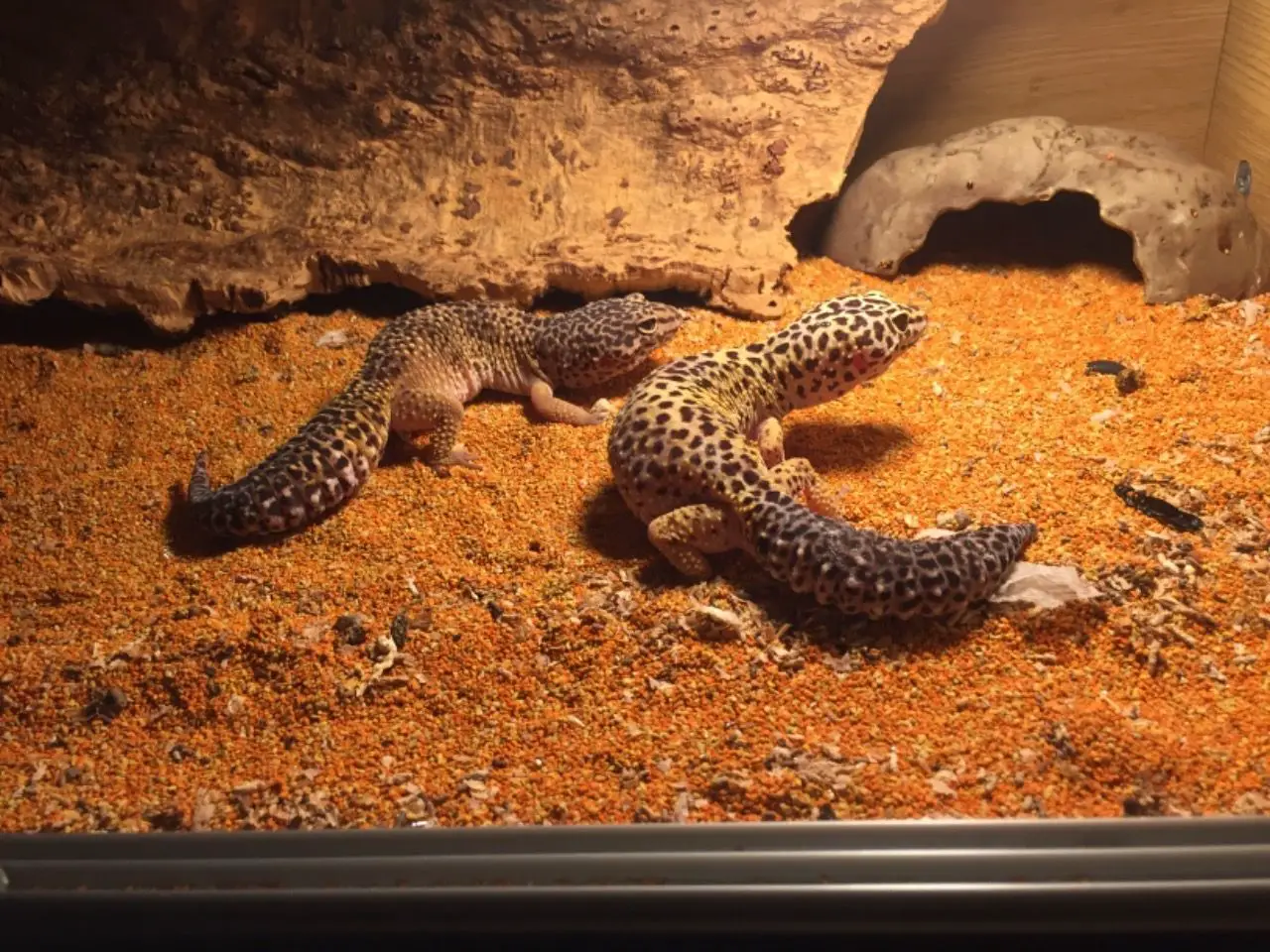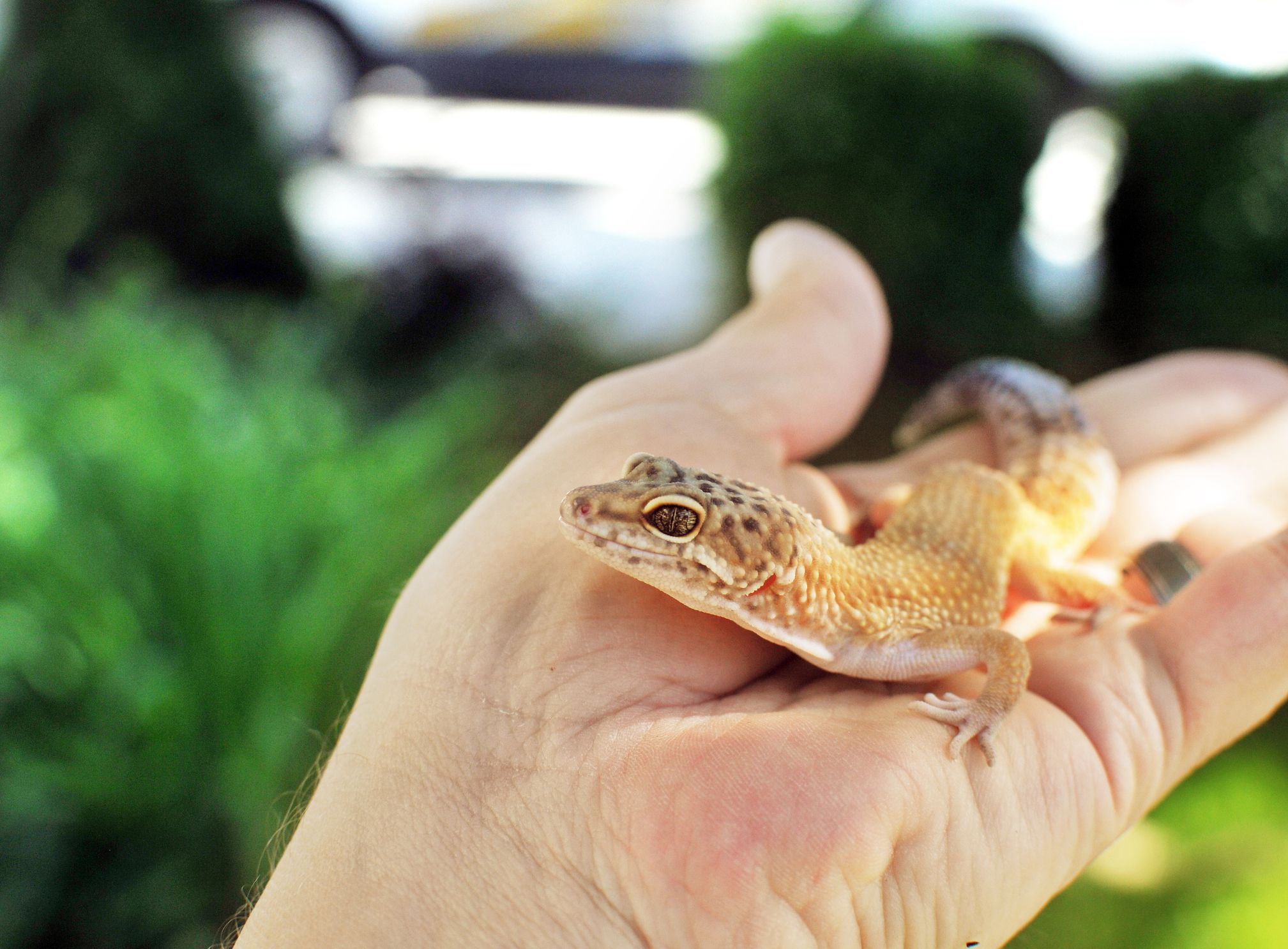Leopard geckos are reptiles that originate from arid desert environments. As cold-blooded animals, leopard geckos rely on external heat sources to regulate their body temperature. This means providing an adequate heat source is critical for a leopard gecko’s health and wellbeing. So how long can a leopard gecko go without heat before it becomes a serious issue?
Understanding a Leopard Gecko’s Heating Needs

Leopard geckos require a temperature gradient within their enclosure to thermoregulate, meaning they need a ‘hot side’ and a ‘cool side.’ The hot side should maintain a temperature of 88-92°F, while the cool side should stay around 70-75°F. At night, the temperature can drop to the mid-60s.
Basking temperatures reaching 100-105°F are needed to aid digestion and immune system functioning. Temperatures lower than 65°F can compromise digestion and the immune system while temperatures below 50°F can be life-threatening.
Leopard geckos are ectothermic, meaning they depend on external heat sources like heat lamps, under tank heaters, and heat mats to maintain their preferred body temperature range of 88-92°F. Without adequate heat, leopard geckos are unable to properly thermoregulate. This will negatively impact their health and activity levels.
Consequences of Being Without Heat

Leopard geckos can survive short periods without heat, such as during a power outage. But after 24 hours without heat, they will begin to suffer adverse health effects.
Prolonged lack of heat can lead to:
- Lethargy and inactivity
- Loss of appetite
- Difficulty digesting food
- Constipation
- Weakened immune system
- Greater susceptibility to illness
- Organ failure
Lack of heat impacts a leopard gecko’s entire body. Digestion will slow or halt as their metabolism relies on warmth to function. Appetite diminishes as their hunger signals weaken. Without adequate heat for energy, the gecko becomes increasingly lethargic.
The immune system also suffers without heat, leaving the gecko prone to infections and illness. Vitamin D3 synthesis requires sufficient UVB light and heat, so deficiencies may occur. Their growth may become stunted.
If a leopard gecko goes too long without adequate heat, organ failure and death can occur. Generally, leopard geckos can only survive about one week without heat before their health is critically endangered.
Providing Proper Heating

To keep your leopard gecko healthy, aim to maintain proper temperatures day and night. Use an under tank heater or heat mat for consistent heat concentrated in one area. Pair this with an overhead ceramic heat emitter or heat bulb to create a hot basking spot.
Make sure heating elements are controlled by a thermostat – this prevents overheating. Place multiple digital thermometers and hygrometers throughout the enclosure to monitor temperatures in different areas.
Avoid using heated reptile substrates, as these can cause thermal burns. Also be cautious of compact UVB bulbs, as these emit high amounts of heat.
Check temperatures daily. When cleaning the enclosure, return your gecko quickly to maintain warmth. During short power outages, wrap a heated microwavable heat pack in a towel and place it in the enclosure to provide temporary heat. If without power for over 12 hours, consider rehoming to a location with electricity.
With their heating needs met, leopard geckos can live over 20 years in captivity. Be diligent in providing proper temperatures, as too little heat for too long can be life threatening for leopard geckos. Monitor closely and act quickly if you notice your gecko becoming inactive, not eating, or showing signs of illness. Proper heating is essential for their health and wellness.
Conclusion
Leopard geckos rely on adequate external heating to stay healthy. While they can withstand short periods without supplemental heat, a lack of warmth for more than 24 hours will put their health at risk. Digestion, appetite, activity levels, immune function, growth, and organ function are all compromised when a leopard gecko gets too cold. Ensure proper temperatures with under tank heaters, heat mats, and overhead heating elements controlled by thermostats. Monitor temperatures diligently, as leopard geckos can only survive about one week without access to proper heat sources before their health becomes critically endangered. Providing the right amount of heat allows leopard geckos to thrive.
FAQs About How Long Can A Leopard Gecko Go Without Heat
What should I do if a power outage affects their heat source?
If a power outage affects the heat source for your leopard gecko, use alternative heat sources like hand warmers or battery-powered heating pads to maintain the enclosure’s temperature. Insulate the enclosure with blankets to retain warmth. Monitor the temperature closely and restore the primary heat source when power is restored.
Can leopard geckos hibernate or brumate in response to cold?
Leopard geckos do not naturally hibernate or brumate. They are not equipped for such extended periods of inactivity. Instead, they require consistent warmth throughout the year. Cold temperatures can be detrimental to their health, so it’s important to maintain proper heating in their enclosure.
How does cold affect the digestive system of leopard geckos?
Cold temperatures can slow down the digestive system of leopard geckos, leading to reduced appetite and potential digestion problems. Prolonged exposure to cold can even lead to more severe health issues. It’s crucial to provide a stable, warm environment to support their digestion and overall well-being.
Are there emergency heating options for geckos in cold conditions?
Yes, there are emergency heating options for geckos in cold conditions. Use battery-powered heating pads, reptile heat emitters, or even hand warmers (wrapped in cloth to prevent direct contact) to maintain the enclosure’s temperature during power outages or unexpected cold snaps. Ensure these alternatives are safe and monitored closely.
How can I maintain proper heating during winter months for my gecko?
To maintain proper heating during winter months, use reliable heat sources like under-tank heating mats, ceramic heat emitters, or heating cables. Ensure the enclosure remains within the ideal temperature range (typically 88-92°F or 31-33°C on the warm side) by monitoring with a thermostat and making adjustments as needed to keep your gecko comfortable.



